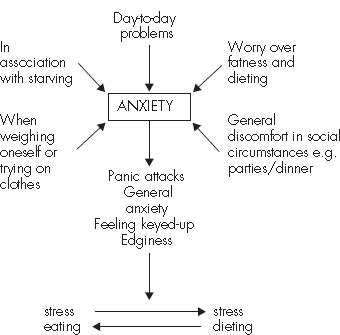
It has been calculated that as many as 70 per cent of women with anorexia nervosa also experience some type of anxiety disorder at some stage. Anxiety can have significant effects on your quality of life, as the following example shows.
Megan, a 25-year-old shop assistant, had been suffering from AN for seven years. She hated going out to parties, but her friends always nagged her to go and she was afraid she would look ‘different’ if she refused.
On the days leading up to a party she would nd herself becoming irritable and edgy, worrying excessively about what to wear, what she would say and what others would think of her. At the parties themselves, she found herself to be sweating profusely and often felt others would hear her heart beating, it was so loud. She was always exhausted and miserable by the time she arrived back home.
Overcoming anxiety involves first understanding the causes and symptoms.
Figure S8.1 shows the many ways in which anxiety and AN interact. Are you a stress eater (turning to food for comfort, grazing, etc.) or a stress dieter?

The effects of anxiety can be felt as physical sensations, as in Megan’s case, described above. These physical effects are very real and are determined by the body’s automatic response to perceived danger, whereby the body prepares itself for ‘fight or flight’ in the face of perceived danger by raising the heart rate, quickening breathing and producing adrenaline. Problems arise when this reaction occurs in a situation which would not normally call for such a dramatic response, i.e. in an inappropriate setting.
Hyperventilation, or ‘overbreathing’, can itself produce a range of frightening sensations which may trigger a continuous rise in anxiety and thus further symptoms. For this reason, if you find yourself hyperventilating, it is worth learning how to calm your breathing. Other books in this series deal with the causes and symptoms of anxiety in greater depth and contain useful suggestions on counteracting symptoms: see Overcoming Anxiety by Helen Kennerley, Overcoming Panic by Derrick Silove and Vijaya Manicavasagar and Overcoming Social Anxiety and Shyness by Gillian Butler. (For details see the ‘Useful Books’ section on p. 241.)
Anxiety can also produce changes in your thinking, again as we saw with Megan, who found herself to be irritable and edgy before social events. Figure S8.3 shows some of the other effects of anxiety on thinking.
Figure S8.2 The physical effects of anxiety
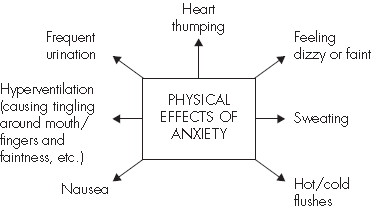
Figure S8.3 Anxiety-induced changes in thinking
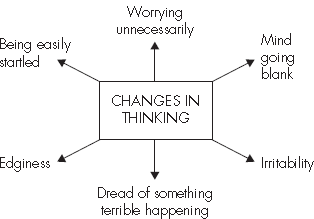
Figure S8.4 How anxiety levels change over time
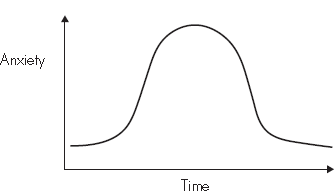
Figure S8.5 How anorexic feelings about food change over time
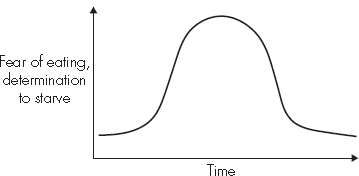
Looking at Figures S8.2 and S8.3 and Megan’s case history, think about your own experience of anxiety:
Take a look at Figure S8.4, which shows how your level of anxiety changes if you are in, and stay in, a stressful situation. The most important point is that anxiety subsides with time. However, if the anxiety-provoking situation is avoided it becomes quite difficult to believe that the symptoms can decrease; therefore, one of the first steps in learning to deal with anxiety is to stay within the situation, however uncomfortable it seems, in order to discover that the symptoms can be tolerated and will decrease.
Can the same curve apply to feelings about food and eating? Imagine the same graph with a different label on the left-hand axis, as shown in Figure S8.5 – and the answer is clearly ‘yes’. Again, it can be difficult to believe that these feelings are tolerable; the easiest option seems to be to ‘give in’ and avoid eating. But this could in fact be described as avoiding the anxiety; and the result is that the anorexic behavior is reinforced. In order to overcome anorexic symptoms you may have to learn to cope with the increasing tension by using anxiety management techniques and finding distractions from eating-related anxiety. It is also important to tackle the negative automatic thoughts that could trigger a binge; refer back to Steps 3 and 4 to remind yourself about how to do this.
Increasing tension can be tackled directly by using relaxation techniques. Relaxation can also be used to develop an awareness of physical tension that may build up to the point where it becomes problematic.
To begin with, it may be useful to use one of the many relaxation tapes commercially available. These will take you through a sequence of stages, prompting you to relax the main muscle groups of the body in turn and often inviting you to imagine yourself in a safe, relaxing situation, e.g. in a sunny garden or on a private beach. Figure S8.6 sets out some guidelines for using such a tape.
Figure S8.6 How to approach a relaxation exercise
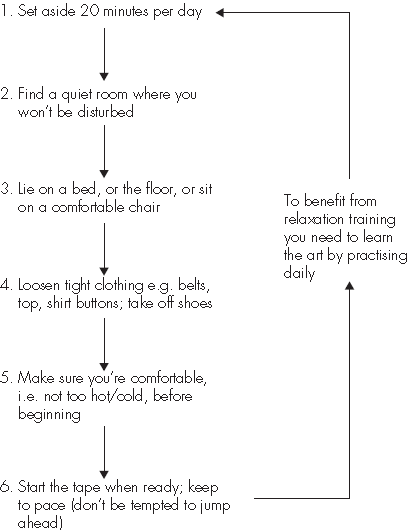
Other suggestions of ways to relax, including how to make your own relaxation tape, are given in Step 10 below, ‘Coping Strategies for the Future’.